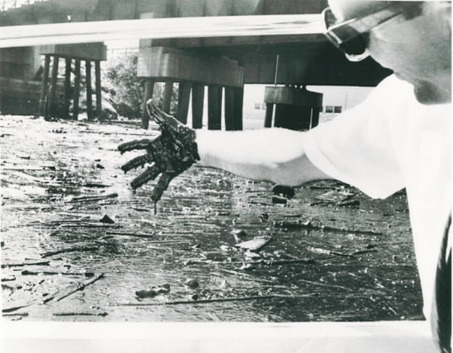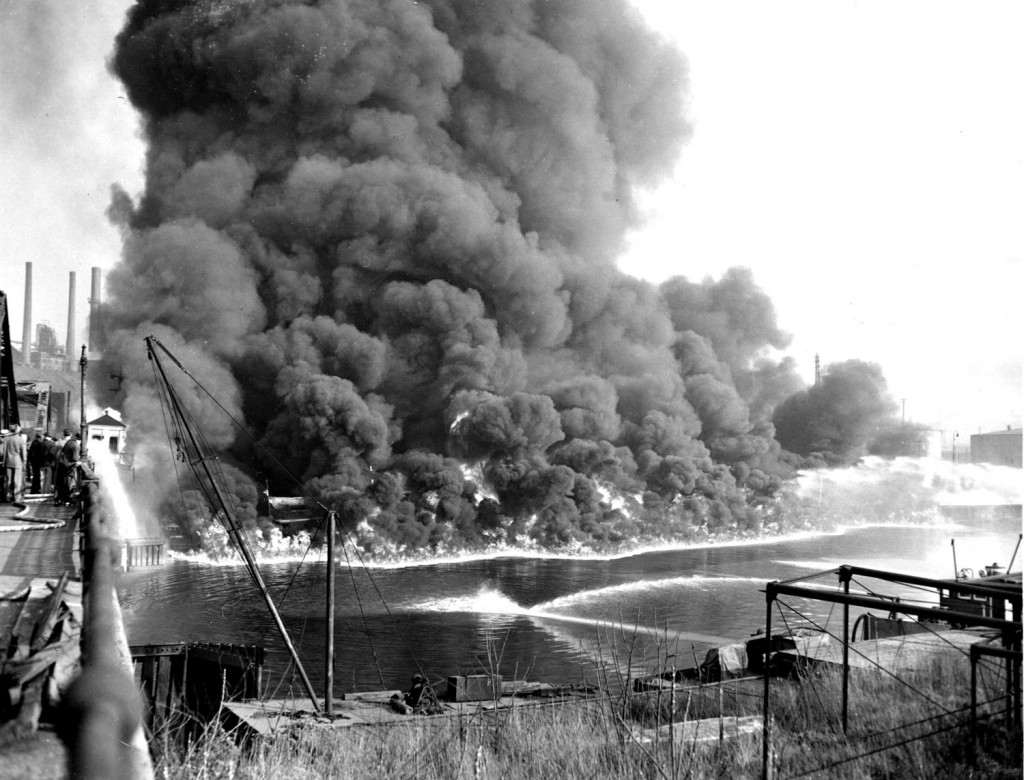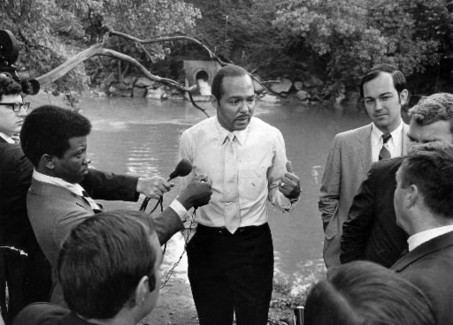The Cuyahoga River in the 1960s (above, source)
1952 Cuyahoga River fire (above, source)
Mayor Carl Stokes and Ben Stefanski, city utilities director, meet with reporters on the banks of the Cuyahoga, the day after the fire (above, source)
The 31st Annual Joseph and Edith Vogel Lecture
Where the River Burned: Carl Stokes and the Struggle to Save Cleveland.
Monday March 2, 2015 @ 7:30pm
Benes Rooms A & B, Hamilton-Williams Campus Center
In the 60s, Cleveland suffered through violence, spiking crime rates, and a shrinking tax base, as the city lost jobs and population. When the Cuyahoga River caught fire in the summer of 1969, the city was at tis nadir, polluted, and impoverished, struggling to set a new course. Carl Stokes, the first African American mayor of a major U.S. city and his administration set new policies to combat pollution, improve housing and spark downtown development. In this lecture, Dr. David Stradling, Professor of urban and environmental history at the University of Cincinnati, describes Stokes’ attempt to save Cleveland.




One thought on “OWU’s Vogel Lecture 2015: “Where the River Burned: Carl Stokes and the Struggle to Save Cleveland””